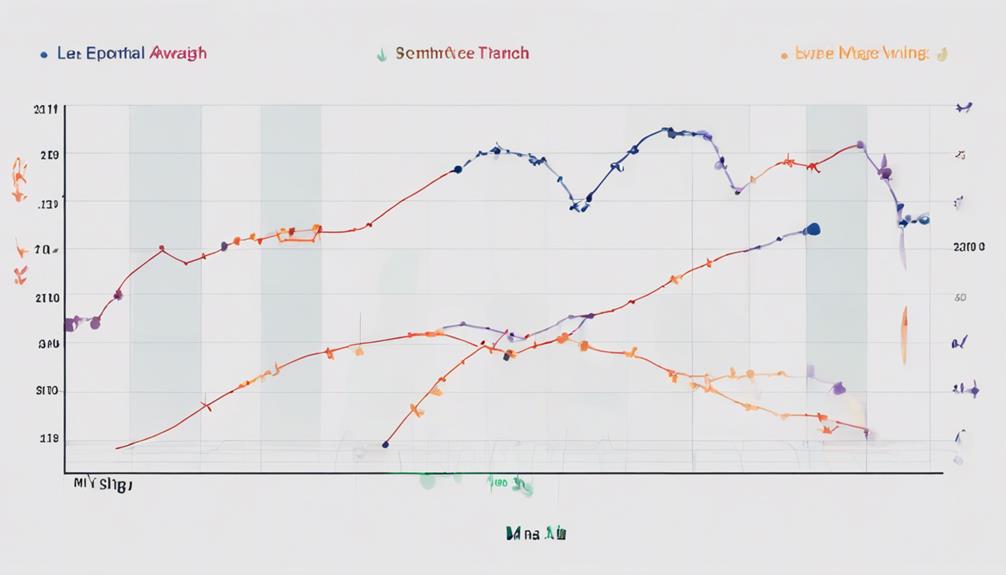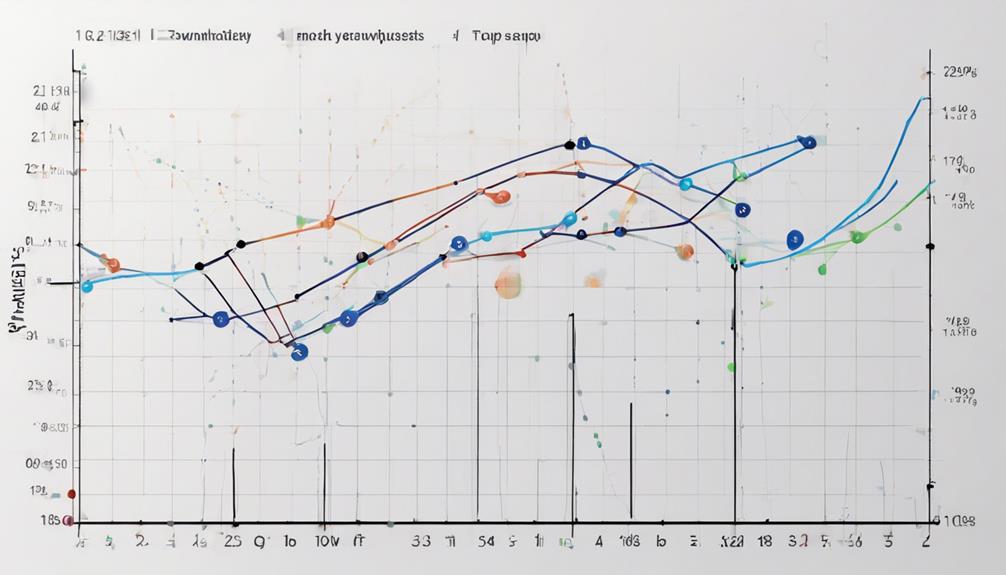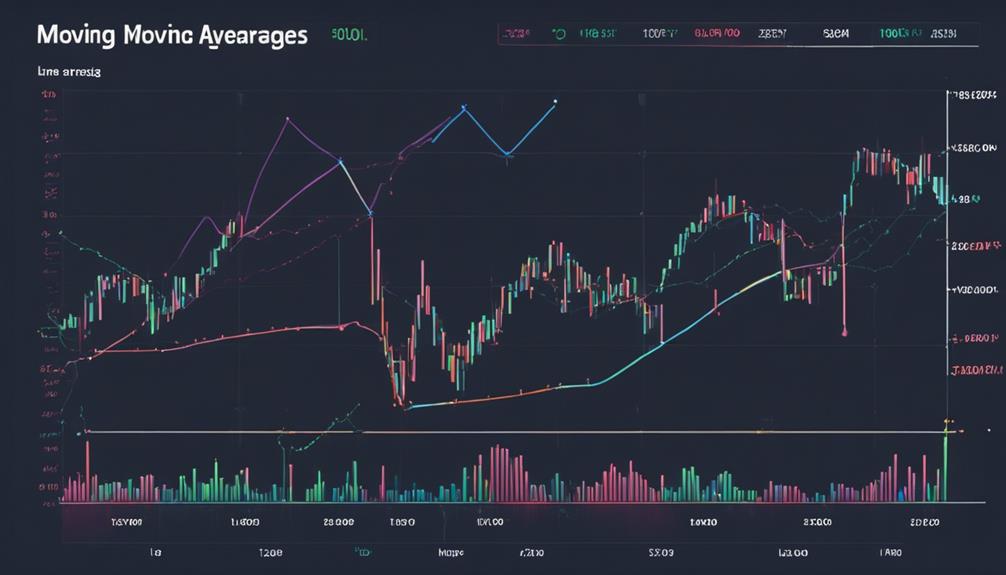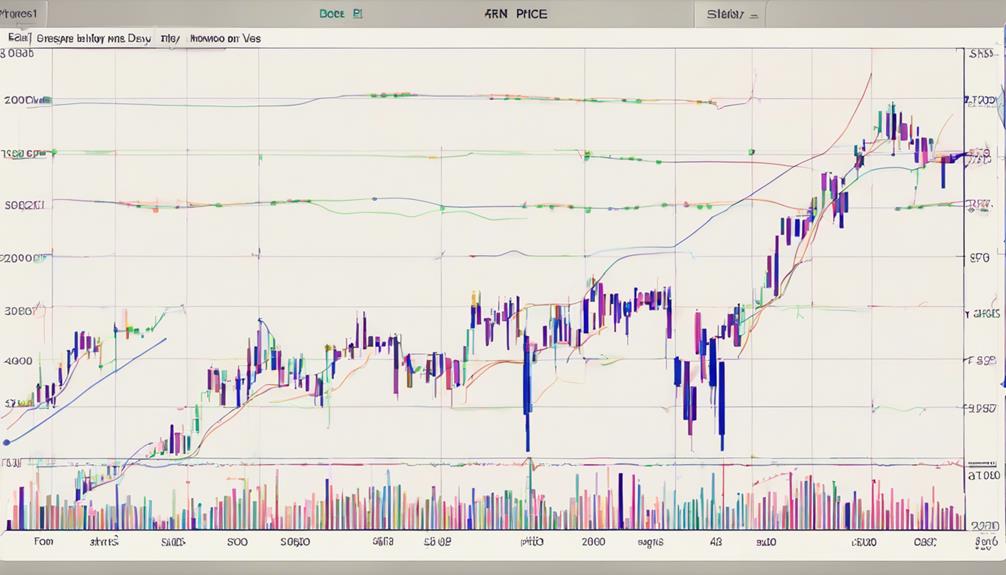When it comes to understanding the market trends and making informed decisions, the concept of moving averages can be both essential and intricate.
You might be familiar with the basics, but have you truly grasped how these indicators can elevate your trading strategies to a new level of sophistication?
By exploring the nuances of different types of moving averages and their practical applications, you are on the brink of unlocking a world of potential in the realm of technical analysis.
Purpose of Moving Averages
Moving averages serve as essential tools for traders seeking to analyze stock price movements by smoothing out data and highlighting underlying trends. These averages, such as the Exponential Moving Average (EMA) and Simple Moving Average (SMA), play a crucial role in technical analysis.
They provide traders with key support and resistance levels, aiding in decision-making when trading securities. By filtering out short-term fluctuations, moving averages help you focus on the broader price direction, confirming trends and predicting potential reversals.
Utilizing moving averages allows you to establish strategic entry and exit points in the market, empowering you to make informed trading decisions based on the overall price movement rather than getting caught up in momentary price fluctuations.
Types of Moving Averages

When exploring the diverse landscape of moving averages, it's crucial to understand the distinct characteristics of various types to effectively analyze stock price movements.
Simple Moving Averages (SMA) calculate the average price over a specific period to smooth out price data and identify trends.
On the other hand, Exponential Moving Averages (EMA) give more weight to recent prices, making them more responsive to price changes compared to SMAs. Traders prefer EMA for its ability to capture recent price changes effectively and respond quickly to market movements.
Both SMAs and EMAs are essential tools in technical analysis, aiding in the identification of moving average crossovers and interpreting price action to make informed trading decisions based on historical price data.
Calculation of Moving Averages

To understand the process of calculating moving averages effectively, it's essential to grasp the fundamental principles behind the averaging of closing prices over a specified time frame. Simple Moving Averages (SMA) are computed by summing up the closing prices over a certain number of periods and dividing by that count.
In contrast, Exponential Moving Averages (EMA) prioritize recent prices more heavily, adjusting the weight through a smoothing factor. This makes EMAs more responsive to price changes and reflective of the current trend direction. The EMA calculation involves a constant that influences how quickly the average adapts to new data points.
Interpretation of Moving Averages

Utilizing moving averages effectively involves analyzing the trend direction by smoothing out price data over a specific period. When interpreting moving averages, consider the following:
- The direction of the moving average indicates the market trend.
- Moving averages can act as support or resistance levels, signaling potential price reversals.
- Crossovers of different moving averages can suggest changes in market trends.
- Simple moving averages (SMA) and exponential moving averages (EMA) offer varying levels of responsiveness to price changes.
- Understanding the interpretation of moving averages is crucial for identifying market trends and potential entry or exit points.
Can You Explain the Basics of Moving Averages for Beginners?
Moving averages can be a helpful tool for beginners in understanding market trends. There are various ways to navigate moving averages, but the basic concept involves averaging a stock’s price over a specific time frame. This smoothed line aids in identifying potential buy or sell signals, assisting traders in making informed decisions. By keeping an eye on the crossing of moving averages, beginners can start grasping their significance in analyzing market movements.
Practical Applications of Moving Averages

Consider incorporating moving averages into your trading strategy for enhanced analysis and decision-making capabilities. Utilizing a long-term moving average alongside a shorter-term moving average can provide valuable insights into trend confirmation.
By recognizing technical patterns such as the Golden Cross and Death Cross, you can refine your trading strategies and make more informed decisions. Moving averages can also help identify short squeeze opportunities and predict bullish market moves, especially when observing patterns like the Inverse Head and Shoulders.
Understanding float rotation metrics in conjunction with moving averages offers valuable insights into stock turnover, volatility, and trading activity. By incorporating these practical applications of moving averages, you can improve your trading analysis and potentially capitalize on market trends more effectively.
How can I effectively use moving averages in my trading strategy?
When it comes to enhancing your trading strategy, understanding the best moving averages strategies is crucial. By utilizing the right combination of moving averages and applying them effectively, you can identify trends, support and resistance levels, and potential buy or sell signals with greater accuracy.
Frequently Asked Questions
What Are the Basics of Moving Average?
Moving averages smooth price data to identify market trends. They average security prices over specific periods like 10, 50, or 200 days. Traders use them to filter noise, focus on trend direction, and determine entry/exit points.
What Are the 4 Moving Average Strategies?
To implement the four moving average strategies effectively, you need to understand their unique approaches: crossover for signals, pullback for entries, breakout for trends, and trend-following for momentum. Each method offers distinct advantages.
What Is the 5 Simple Moving Average?
The 5 Simple Moving Average (SMA) calculates the average closing price of a security over the last 5 periods. It identifies short-term trends and support/resistance levels. Traders use it to gauge recent price movements for decision-making.
What Are the Essential Moving Averages?
When considering essential moving averages, focus on Simple Moving Average (SMA) and Exponential Moving Average (EMA). SMA offers simplicity and trend analysis effectiveness, while EMA stands out for responsiveness to recent price changes. Choose based on your strategy and market conditions.
Conclusion
In conclusion, mastering the basics of moving averages is like having a compass in the turbulent sea of stock markets. By understanding the trends they reveal and the signals they generate, you can navigate your way to profitable trades with confidence.
So, embrace the power of moving averages as your guiding light in the world of technical analysis, and watch your trading strategies sail towards success.


